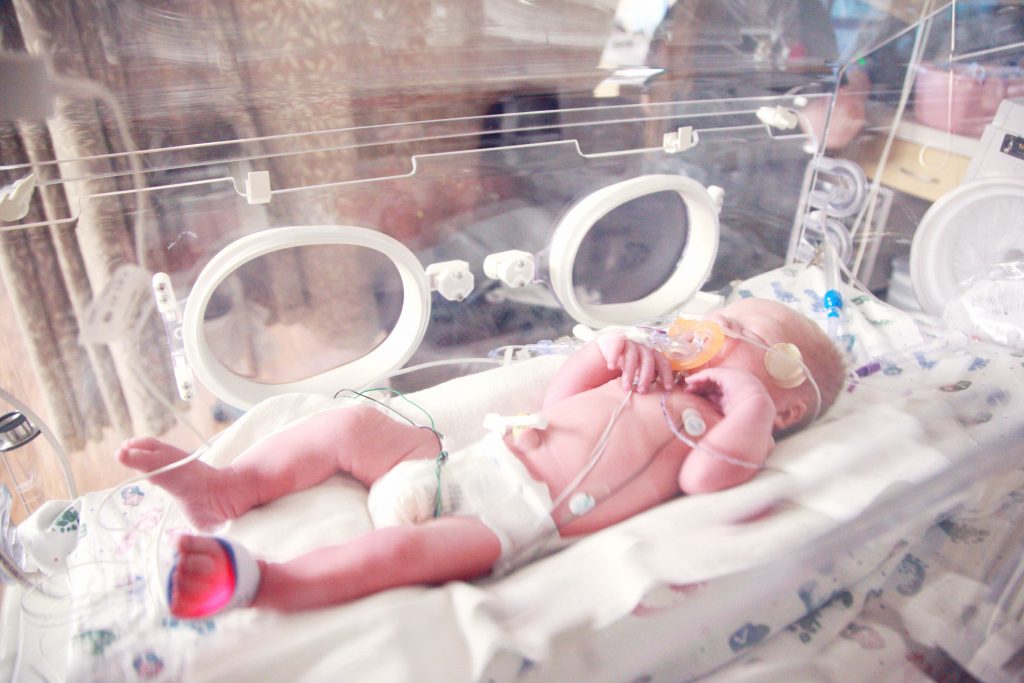By: Philip Breitenbucher, Raquel Ellis, with Nicholas Clift

The opioid crisis in America is far-reaching and affects millions of children and families. The Office of the Surgeon General (2021) reports that 1 in 7 people will develop a substance use disorder in their lives. According to the Centers for Disease Control [CDC] (2021), nearly 500,000 people died from prescription and illicit opioid overdoses between 1999 – 2019 and latest numbers from the CDC suggest an acceleration of deaths during the COVID-19 pandemic.
As a result of this fast-growing problem, the Surgeon General has placed a high priority on controlling this crisis and protecting the well-being of Americans. In 2018, the Surgeon General released a spotlight on the issue of opioids entitled Facing Addiction in America: The Surgeon General’s Spotlight on Opioids which compiles the best available evidence on the prevalence of substance use, opioid misuse, opioid use disorders, opioid overdoses, and related harms (Office of the Surgeon General, 2021). In conjunction with the spotlight, they released a public health advisory urging Americans to carry a lifesaving medication, naloxone, which can reverse the effects of an opioid overdose. Not all overdoses have to end in deaths. More than three out of five overdose deaths involved at least one potential opportunity to link people to care before an overdose or to implement life-saving actions when an overdose occurred (CDC, 2020). Learning more about the risks of opioids, along with the availability and use of naloxone, are ways that can help reduce the opioid spike that resulted from the COVID-19 pandemic.

The ongoing opioid epidemic is an area of great concern for those in the behavioral and social sciences. Professionals in these disciplines recognize the profound impact that opioid misuse has had on children, families, and communities. For example, the use of opioids by mothers during pregnancy can result in numerous physical ailments upon birth and long-term learning and behavioral challenges (Ross et al., 2015). Parental dependency on opioids has also been associated with child maltreatment, foster care reentries, and higher rates of children losing their parents to the criminal justice system or death by accidental overdose. These circumstances have led to increases in children being placed in foster care (Radel et al., 2018; United Hospital Fund, 2019). The opioid epidemic has hit vulnerable communities the hardest, exacerbating such areas as the employment rate, poverty rate, and child educational outcomes (Darolina & Tyler, 2020; Krueger, 2017).
Early identification of parental substance use in child abuse or neglect cases is crucial because of the poorer outcomes for these families versus those for whom child welfare involvement not related to parental substance abuse. Unfortunately, parental substance use is often under-identified for many reasons, including training and resources. To assist in making accurate and timely identifications of parental substance use, screening instruments similar to those utilized in the medical community have been encouraged in the literature (Brook et al., 2014). An example is the SBIRT (Screening, Brief Intervention, and Referral to Treatment) protocol. SBIRT is an evidence-based practice used to identify, reduce, and prevent problematic use, abuse, and dependence on alcohol and illicit drugs. This protocol has been used in various medical settings and has demonstrated positive outcomes for families involved in the child welfare system.

In 2019, the Lafayette Family Preservation Court implemented the SBIRT (Screening, Brief Intervention, and Referral to Treatment) protocol for child welfare involved families in identifying and appropriately treating parental substance use, depression, and risk opioid overdose early on in the life of the case. The SBIRT protocol was administered to parents at court before or after regularly scheduled hearings.
The screeners were made available through an online wellness technology, Wellscreen, using a tablet-enabled interface. The Wellscreen program led the Lafayette case managers step-by-step through the screening and intervention process. Case managers were able to identify parents at risk of substance use and/or mental health disorders, confidently conduct brief interventions, create individualized treatment plans and connect parents to local treatment providers in minutes. Wellscreen also ensured timely follow-up occurred through electronic tracking of treatment plans. After one year of implementation, the researchers found sizable reductions in risk scores, a 66% reduction in depression, and a 60% retention of knowledge on brief opioid overdoses (Breitenbucher et al., 2020).

In the behavioral and social sciences, we work in mental health clinics, schools, hospitals, churches, law enforcement, adult and child protection agencies; each of these settings is an opportunity to implement the SBIRT protocol. Using SBIRT in non-traditional settings, we can intervene with clients before they overdose or develop a severe substance use disorder. In the Fall of 2021, students in CBU’s Master of Social Work (MSW) program will have an opportunity to utilize the Wellscreen product and conduct the SBIRT protocol in their field practicum sites due to a generous gift from Wellscreen Inc.
Those interested in learning more about this social problem and how it is being addressed can go to the U.S. Center for Disease Control and Prevention or the National Institute on Drug Abuse websites. There are also community-based organizations tackling this issue right here in the Inland Empire. To learn more about these efforts, check out the Inland Empire Opioid Crisis Coalition website. To learn more about the intersectionality of the opioid epidemic and the child welfare system, you can go to the National Center on Substance Abuse and Child Welfare or the Child Welfare Information Gateway websites.

References
Breshears, E. M., Yeh, S. & Young, N. K. (2009). Understanding substance abuse and facilitating recovery: A guide for child welfare workers. U.S. Department of Health and Human Services. Rockville, MD: Substance Abuse and Mental Health Services Administration. Retrieved from https://ncsacw.samhsa.gov/files/Understanding-Substance-Abuse.pdf
Breitenbucher, P., Coleman, K.L., & Byrd, P. (2020). Early Detection in Child Welfare: Connecting Families to Quality Treatment Services. Child Welfare League of America, Virtual Summit.
Brook, J., Yan, Y., Lloyd, M. H., & McDonald, T. P. (2014). Screening for Substance Use Disorders as a Supplement to Caseworker Assessment Among Foster Care–Involved Families. Journal of Public Child Welfare, 8(3), 239–259. https://doi.org/10.1080/15548732.2014.903221
Centers for Disease Control and Prevention. (2020). Overdose Deaths and the Involvement of Illicit Drugs: Urgent Need for Overdose Prevention Interventions. https://www.cdc.gov/drugoverdose/pubs/featured-topics/VS-overdose-deaths-illicit-drugs.html?CDC_AA_refVal=https%3A%2F%2Fwww.cdc.gov%2Fvitalsigns%2Fdrugoverdose%2Findex.html
Centers for Disease Control and Prevention. (2021). Understanding the epidemic. U.S. Department of Health and Human Services. https://www.cdc.gov/drugoverdose/epidemic/index.html
Darolina, R. & Tyler, J. (2020, April 13). The opioid crisis and community-level spillovers onto children‘s education. The Brookings Institution. https://www.brookings.edu/research/the-opioid-crisis-and-community-level-spillovers-onto-childrens-education
Krueger, A. B. (2017, September 7). Where have all the workers gone? An inquiry into the decline of the U.S. labor force participation rate. The Brookings Institution. https://www.brookings.edu/bpea-articles/where-have-all-the-workers-gone-an-inquiry-into-the-decline-of-the-u-s-labor-force-participation-rate/
Office of the Surgeon General. (2021). Surgeon General priority: Opioids and addiction. U.S. Department of Health and Human Services. https://www.hhs.gov/surgeongeneral/priorities/opioids-and-addiction/index.html
Radel, L., Baldwin, M., Crouse, G., Ghertner, R. & Waters, A. (2018). ASPE research brief: Substance use, the opioid epidemic, and the child welfare system: Key findings from a mixed methods study. Retrieved from https://aspe.hhs.gov/system/files/pdf/258836/SubstanceUseChildWelfareOverview.pdf
Ross, E., Graham, D., Money, K., & Stanwood, G. D. (2015). Developmental consequences of fetal exposure to drugs: What we know and what we still must learn. Neuropsychopharmacology, 40, 61–87. https://doi.org/10.1038/npp.2014.147
United Hospital Fund (2019, November). The ripple effect: National and state estimates of the U.S. Opioid Epidemic‘s impact on children. https://uhfnyc.org/media/filer_public/6e/80/6e80760f-d579-46a3-998d-1aa816ab06f6/uhf_ripple_effect_national_and_state_estimates_ chartbook.pdf